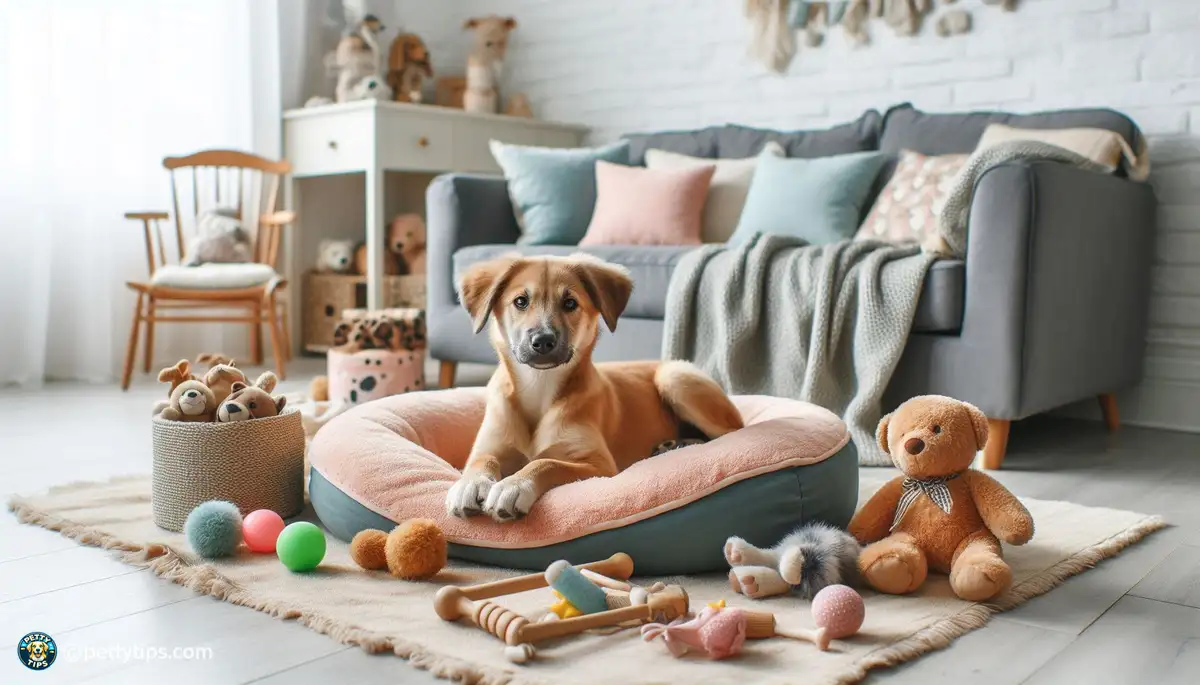Creating a Safe Space for Your Newly Adopted Rescue Dog

Welcoming a New Member into Your Family
Welcoming a rescue dog into your home is a beautiful decision, filled with promise and companionship. But amidst the excitement, it's crucial to remember that your new furry friend may need time to adjust to their new environment. This transition can be overwhelming for them, especially if they've experienced trauma or neglect in the past. Providing a safe space is the first step towards helping them feel secure and loved in their new home.
Establishing Trust and Security
For many rescue dogs, trust doesn't come easy. They may be fearful of new surroundings and hesitant to form attachments with unfamiliar faces. By creating a safe space, you're offering them a sanctuary where they can retreat when feeling anxious or overwhelmed. This space serves as their haven, a place where they can gradually build trust and feel secure in their new surroundings.
Addressing Behavioral Challenges
Rescue dogs often come with their own set of behavioral challenges, stemming from past experiences or lack of socialization. These challenges can manifest in various ways, such as aggression, fearfulness, or separation anxiety. A safe space provides them with a sense of control and predictability, which can help alleviate some of these behavioral issues. It's a place where they can feel calm and relaxed, free from external stressors.
Building a Foundation for Training and Bonding
Training and bonding are essential aspects of building a strong relationship with your rescue dog. However, these processes require time, patience, and a conducive environment. A safe space serves as the perfect setting for training sessions, allowing you to focus on building positive associations and reinforcing desired behaviors. It's also a space where you can bond with your furry friend on their terms, gradually earning their trust and affection.
Creating the Ideal Safe Space
Choosing the Right Location
When creating a safe space for your rescue dog, location matters. Ideally, it should be a quiet and secluded area of your home, away from high traffic areas and loud noises. This could be a corner of the living room, a spare bedroom, or even a cozy crate. The key is to choose a spot where your dog feels safe and comfortable, with easy access to food, water, and toys.
Providing Comfort and Security
Once you've selected the perfect location, it's time to outfit the space with all the comforts your dog needs. This includes a soft bed or blanket for them to curl up on, as well as toys and chews to keep them entertained. Consider incorporating items with familiar scents, such as a worn t-shirt or blanket, to help ease their transition. Additionally, make sure the space is escape-proof and free from potential hazards.
Establishing Boundaries and Routine
Consistency is key when it comes to creating a safe space for your rescue dog. Establish clear boundaries and routines to help them feel secure and at ease. This includes designated times for feeding, walks, and play, as well as a consistent bedtime routine. By sticking to a schedule, you'll provide your dog with a sense of structure and predictability, which can help reduce anxiety and promote positive behavior.
Encouraging Positive Associations
To encourage your dog to view their safe space as a positive environment, associate it with pleasant experiences. Offer treats, praise, and affection whenever they choose to spend time there voluntarily. You can also incorporate interactive toys and puzzle feeders to keep them mentally stimulated and engaged. The goal is to create a space that they associate with comfort, relaxation, and happiness.
Nurturing a Positive Relationship
Patience and Understanding
Building a strong bond with your rescue dog takes time, patience, and understanding. Remember that they may have experienced trauma or neglect in the past, which can impact their behavior and trust levels. Approach interactions with empathy and compassion, allowing them to progress at their own pace. Be patient with setbacks and celebrate small victories along the way.
Communication and Consistency
effective communication is essential for nurturing a positive relationship with your rescue dog. Learn to read their body language and vocalizations, paying attention to their cues and signals. Use positive reinforcement techniques to encourage desired behaviors, and avoid punishment or harsh corrections. Consistency is key, so be sure to enforce rules and boundaries consistently to avoid confusion.
Socialization and Exposure
Gradually exposing your rescue dog to new experiences and environments is crucial for their socialization and confidence-building. Start slowly, introducing them to unfamiliar sights, sounds, and smells in a controlled manner. Use treats and praise to reward calm and confident behavior, and always prioritize their safety and comfort. With time and patience, they'll learn to navigate the world with confidence and ease.
Seeking Professional Guidance
If you're struggling to create a safe space for your rescue dog or address behavioral issues, don't hesitate to seek professional guidance. A certified dog trainer or behaviorist can provide personalized advice and support tailored to your dog's specific needs. They can help you develop a customized training plan, overcome challenges, and strengthen your bond with your furry companion.
Conclusion
Welcoming a rescue dog into your home is a rewarding experience that requires patience, compassion, and dedication. By creating a safe space tailored to their needs, you're laying the foundation for a trusting and loving relationship. Remember to be patient, consistent, and understanding as you navigate this journey together. With time and care, your rescue dog will blossom into a happy and confident member of your family.
